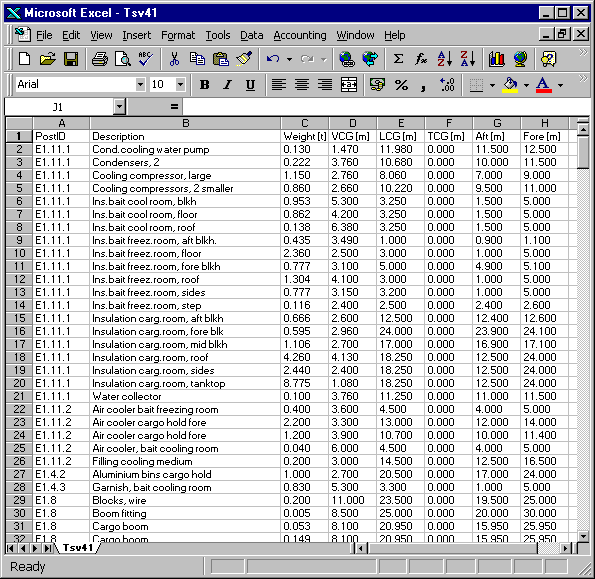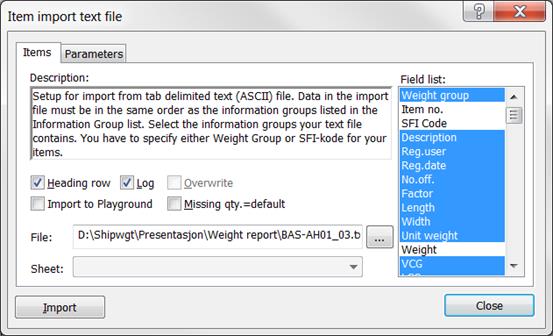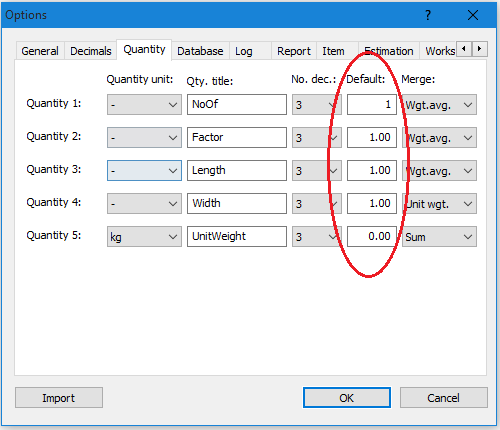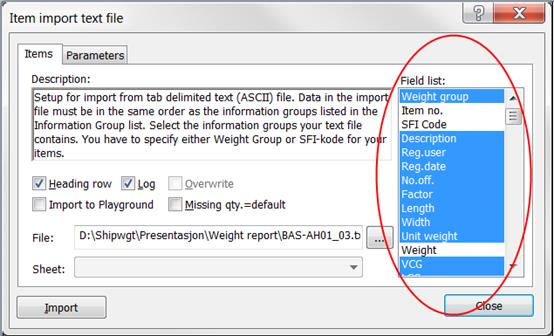Additional Features > Importing and Exporting Data in ShipWeight
To import weight items into ShipWeight from a spreadsheet, the spreadsheet first has to be organized in such a way that ShipWeight is able to import it. The weight data in the spreadsheet should be organized in columns. The spreadsheet might also have a heading row. The picture below shows an example on how a spreadsheet can be organized.

To know which columns to include and what order to put them, the Import window can be checked to find out. The Import window can be opened from the Project menu by selecting Text file… from the Import submenu.

In the Weight Group list at the right side of the window, possible import columns are shown, and what order they should appear in. The columns should be in the same order as the vertical order of the quantities shown in the window.
You are free to choose whichever columns you like as long as the Weight group column is included. This has to be included because the ShipWeight import routine needs to know which weight groups to store the imported weight items in. If Weight group is selected, the weight groups are connected to the weight item directly. If you are using the standard ShipWeight breakdown structure, you can choose the SFI Code instead of the Weight group column. If the SFI Code is selected, a mapping table in the ShipWeight database will translate the SFI code to ShipWeight weight group code. The mapping between ShipWeight codes and SFI codes can be checked in the Search… window under the menu Weight Group.
After setting up the columns and filling in data so that the spreadsheet is organized properly, the spreadsheet file has to be saved as a text file (ASCII) with tab delimiter. Give the file the extension .txt if this is not done automatically when saving.
Now you are ready to import the file to ShipWeight. If not already done, close the spreadsheet file. Select the window Text file… on the submenu Import on the ShipWeight Project menu. Enter the path to the import file (the saved text file) in the edit field, or find it by clicking the Browse button […].
If the text file contains a heading row, check the Heading row option.
To replace missing quantity values with default values, make sure to check the option Missing qty.=default. The default values for each of the Quantities can be set on the Quantity tab in the ShipWeight Options window. The Options window can be accessed from the View menu by selecting Options….

To include the imported items in the log database, make sure to check the Log checkbox. With logging enabled, the import is more time consuming than without. However, logging is needed to be able to create log-reports.
In the window resource ‘Weight group list’, select the same quantities as the columns in the text file.

Finally, click the Import button to start importing the weight items. Click the OK button to close the window.